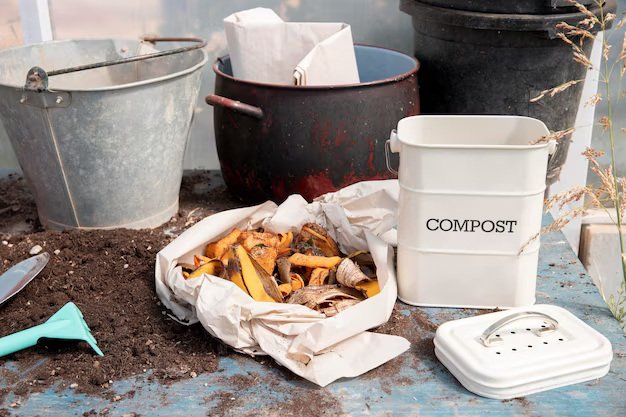Forest Garden Initiative Brings Regenerative Agroforestry to Africa’s Sahel Region
In early July 2025, a growing movement emerged that seeks to transplant the forest garden model—originally popularised in wetter parts of Sub‑Saharan Africa—into the semiarid landscapes of the Sahel. This region, stretching from Senegal to Chad, is beset by decades of drought, land degradation, deforestation, and climate stress. Now, development organisations, governments, and local farmers are coming together to pilot the approach across this harsh terrain.
The forest garden concept combines trees, shrubs, and food crops in a mosaic of sustainable agroforestry that restores soils, diversifies diets, and builds climate resilience. Led by Trees for the Future (TREES), a US‑based NGO, forest gardens have already been flagged by UNEP and FAO in 2024 as flagship restoration models in Sub‑Saharan Africa. In Senegal’s Fatick region, more than 1,000 households now nurture a mix of vegetables, hibiscus, fruit trees, and nitrogen‑fixing species—the food supply has become year‑round, and income from sales is improving livelihoods.
Now, TREES and its partners plan to extend those results into the Sahel’s more fragile context. But can the approach survive here, where rainfall is erratic, water is hard to access, and population growth places additional stress on resources? On the ground, pilots, recent studies, and local testimonies offer both hope and caution.

In This Article
- Results and Field Stories in the Sahel
- Scaling Through Policy, Finance, and Adaptive Science
- What Experts Say, What Farmers Experience, and What the Data Reveal
- Table: Sahel Landscape Restoration Projects in 2025
- Actionable Advice: How Communities, NGOs, and Policymakers Can Build Success
Results and Field Stories in the Sahel
According to a report by The Guardian, the city of Ouagadougou in Burkina Faso now sits within a 2,000-hectare ‘green belt’ that combines trees, vegetable beds, and water tanks. This project—initially seeded in the 1970s but re-energised after a devastating 2024 heatwave—provides both cooling and food to thousands, transforming former stone‑collecting labourers into smallholder garden keepers. One gardener, Zarate Ibundo, earns a daily income growing lettuce and cabbage—about CFA 2,000 per day, roughly £2.50—while another, Salimata, now eats onions and okra she farms herself. Residents describe a daily rhythm: “We water, rest, water,” laughing in the shade of banana trees as their suffering subsides.
In Mali, forest restoration groups led by former environment minister Aida M’bo struggle with local people cutting newly planted trees for firewood. Despite planting efforts tied to the Great Green Wall initiative, only about 4% of the intended area has been restored so far. An AP News report suggested that a study by the African Energy Commission found that roughly 64% of Mali’s energy consumption comes from biomass, making firewood essential for daily life. Activists lament that while reforestation is urgent, immediate subsistence needs often override conservation efforts.
Meanwhile, in Senegal, farmer‑managed natural regeneration (FMNR) practices are spreading fast. In regions like Kaffrine and Diourbel, over 50,000 hectares have been rehabilitated in just four years via FMNR methods, which involve protecting and pruning existing tree stumps to regenerate cover. In Mali, a six‑million‑hectare agroforestry parkland shows signs of natural recovery. Common species include Faidherbia albida—a nitrogen‑fixing tree that sheds leaves in the rainy season to allow crop growth and adds organic matter to the soil.
In Chad, SOS SAHEL’s national director, Abdou Aziz, recently described overseeing a forest garden pilot funded by TREES. Local teams establish one‑acre plots with roughly 2,500 trees per farm, over a four‑year sequence, combined with vegetable beds and living fences. These serve not only ecological goals but also provide fruits, firewood, and fodder, helping households resist climate shocks.
Scaling Through Policy, Finance, and Adaptive Science
Scaling this model in the Sahel requires coordination among multiple actors—international donors, NGOs, governments, researchers and communities. A landmark agreement signed in Dakar on July 4 2025, between the Government of Senegal and FAO launched the SURAGGWA programme: “Scaling‑Up Resilience in Africa’s Great Green Wall.” It aims to restore forest cover, strengthen climate resilience, and reverse the annual loss of 17,000 hectares of trees in Senegal—forest loss that had wiped out 340,000 hectares in less than two decades.
Simultaneously, the RESILAND Sahel Program, supported by the World Bank, is driving investments in Burkina Faso, Mali, Niger, and Chad—each with $110–150 million landscape restoration projects. In Burkina Faso alone, the CCALM project has restored over 190,000 hectares using community‑driven agroforestry and supported 250 small producers, especially women, working in moringa, baobab and shea chains. This integrated approach combines social and environmental restoration, creating economic opportunity while regenerating land.
The Great Green Wall Accelerator, launched in 2021, mobilised over $19 billion in additional funding and established a new online Great Green Wall Observatory to monitor progress across countries. As of 2020, only 18 million hectares had been restored and 350,000 jobs created—far short of the 2030 targets of 100 million hectares and 10 million jobs—but this new data infrastructure aims to improve transparency and coordination. Yet challenges remain: tree survival rates in early efforts were as low as 20%, security concerns and competing land uses persist, and politics and funding gaps still hamper long‑term goals.
Belgian researchers with the Future Sahel initiative emphasise the need for robust, region‑specific ecological and social data. In Senegal, their field studies along GGW corridors map the variety of land systems, biodiversity patterns, and livelihood strategies—essential inputs for restoration planning that’s both effective and resilient.

What Experts Say, What Farmers Experience, and What the Data Reveal
Experts emphasise that forest gardens must be adapted to Sahel realities. Faidherbia albida, native to the region, has proven critical in FMNR systems for its nitrogen fixation and seasonal shade. Mixed cropping minimises risk and provides diverse revenue streams. And community ownership helps prevent tree cutting for short‑term firewood needs.
A 2024 Science report shows that Africa lost roughly 5% of forest cover between 1992 and 2020, but afforested areas grew by nearly 7%. This rebound suggests potential for restoration if well managed. In Niger, Mali and Burkina Faso alike, FMNR and zai‑pit water harvester techniques have shown success in restoring crops even in degraded soils.
Meet local farmer Amina in Senegal’s Fatick: before joining the TREES program, her family subsisted on millet during the rainy season and nothing the rest of the year. Now she grows onions, cabbage, hibiscus, fruit trees and medicinal plants in her acacia‑fenced garden. “I don’t buy vegetables anymore,” she says—her garden gives food, income, and taming of microclimates in her yard.
Back in Burkina Faso, participants in the Ouagadougou belt testify to visible cooling. According to scientists at the Climate Centre, adding trees at this scale dropped air temperature around plots by several degrees—some studies estimate up to 5 °C cooling effects in botanical‑scale urban green sites—and even modest green spaces can reduce midday heat significantly in Sahelian cities.

Table: Sahel Landscape Restoration Projects in 2025
| Project / Programme | Region / Country | Scope | Impact Measures |
|---|---|---|---|
| TREES Forest Garden Pilot | Senegal, Chad, Mali | 1-acre farm plots (~2,500 trees) | Year‑round food, income, carbon offset (~145 tCO₂/acre over 20 years) |
| Ouagadougou Green Belt | Burkina Faso | 2,000 ha urban agro‑belt | Cooling, local food, income for 2,000+ residents |
| FMNR local regeneration | Senegal, Mali, Niger | Tens of thousands of hectares | 50,000 ha+ restored in Senegal alone |
| SURAGGWA / FAO partnership | Senegal | National scale resilience program | Targets stem loss and reforest 340,000 ha loss |
| RESILAND (World Bank) | Burkina, Mali, Niger, Chad | $110–150 m per country integrated restoration | 190,000 ha restored in Burkina, women empowerment |
Actionable Advice: How Communities, NGOs, and Policymakers Can Build Success
In closing, key lessons emerge for expanding forest gardens across the Sahel in a way that truly works:
- Ground the approach in local adaptation: Use native, drought‑resilient species like Faidherbia albida and Acacia, integrate FMNR, zai pits, and living fences. Adapt planting schedules to seasonal rain patterns and allow flexibility in design.
- Build water security and soil care into plans: Many Sahel communities lack reliable water. Support small-scale catchments, shallow wells, and low-cost drip irrigation where possible. Protect soils with mulch and tree litter, and manage grazing.
- Empower local leadership and stewardship: Projects should be farmer‑led from the start. Training and technical support help, but ownership by local households fosters maintenance, protection, and loyalty even when trees may tempt harvest for fuel.
- Combine restoration with livelihoods and climate resilience: Forest gardens deliver food, fodder, fuel, and shade—but only if crops are marketable and nutritional. Pair agroforestry with training in value‑chain development—e.g. shea, moringa, hibiscus, fruit preserving.
- Track data and survival rates transparently: Use monitoring platforms like the Great Green Wall Observatory. Report survival rates, species mix, yields, and incomes. Use participatory assessments to feed into national forestry and agriculture plans.
- Secure blended finance and policy alignment: Leverage international funding such as the Green Climate Fund, FAO, World Bank (e.g. $300 m fund approvals for Sahel restoration), national budgets, and the private sector. Ensure forest garden efforts align with broader GGW and national land restoration plans.
- Build flexibility to adapt to shocks: Security, climate, and social unrest may disrupt projects. Use shorter cycles, community-based protection, alternative energy access, and youth engagement to buffer shocks and avoid tree theft for fuel.
Conclusion
The forest garden movement entering the Sahel does not represent a silver‑bullet fix, but it does capture something that both farmers and ecologists across the region believe in: that regenerative agroforestry, rooted in local soils and needs, can restore landscapes, strengthen livelihoods, and yield climate resilience. Real‑world pilots in Burkina Faso, Senegal, Mali, Chad, and beyond offer encouraging results—household gardens turning into resilient plot mosaics, cooling heatwaves, feeding families year‑round, and allowing soil and local economies to heal.
Still, scaling responsibly will require continued adaptation: from monitoring tree survival and addressing firewood dependency, to mobilising funds, aligning with Great Green Wall policies, and empowering farmers at every step. But as stories from gardeners like Zarate and Amina remind us, when communities plant roots in new hope, it can bloom into something far larger than just trees—it becomes renewal.
By mid‑2025, forest gardens in the Sahel are more than just an idea—they are emerging models in action: restoring degraded land, regenerating hope, and building green pathways forward through some of Africa’s most fragile landscapes.







